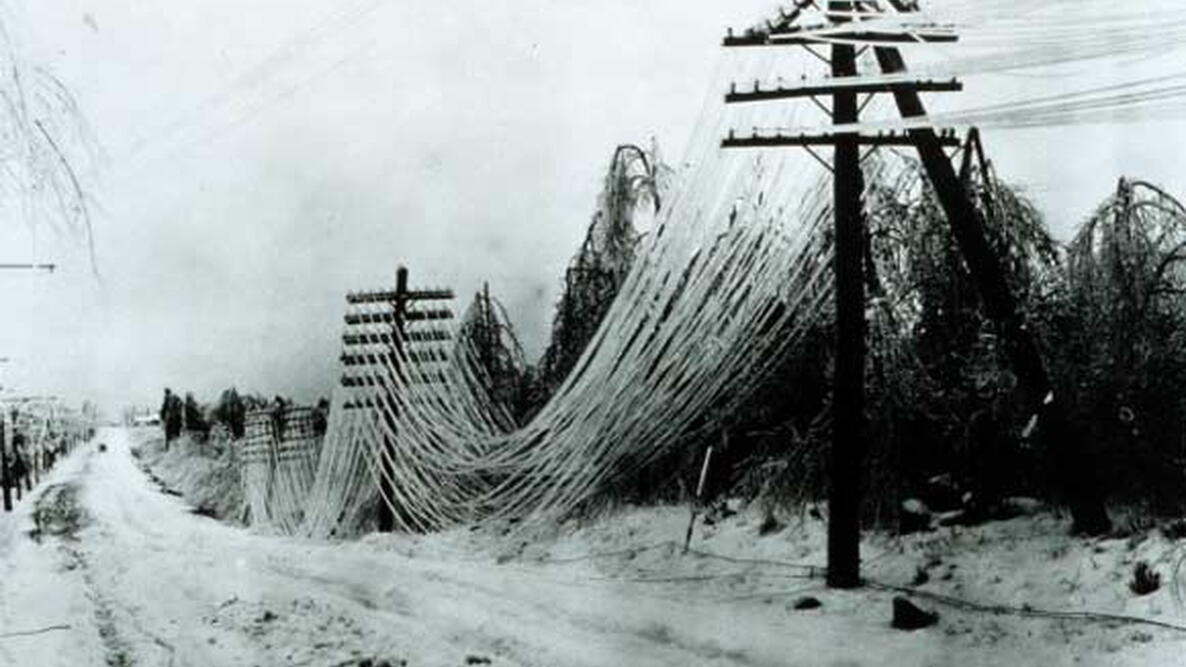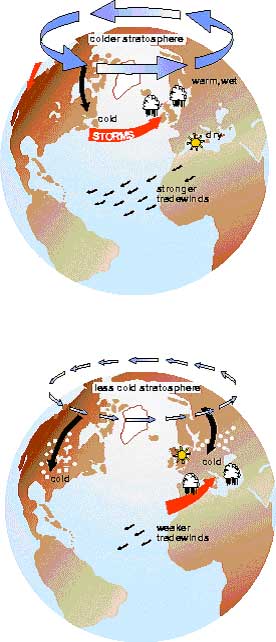
Here in Greenville, TX on Feb 3, 2011 11am temp is 21 degrees F. Earlier this am was 16. La Nina pattern suggests warmer and dryer for here. The Arctic Oscillation has sure overpowered THIS forecast. Snow expected for tomorrow-am. Sure hope the "dryer" el nino kicks in soon.
A song phrase "Slip-slidin away!" comes to mind. :-)
Were having bitter cold temperatures and lake effect snows. Were getting the Alberta Clippers.
...no doubt has been responsible for these freezing (okay, so it's only 37 farenheit) weather trends & high windy dust storms in Baja California Mexico -- BRRR-RRRR!! but thanks for the info!!
I live in Banks County,which is in Northeast Georgia. We rarely get snow,and when we do,it's usually just a dusting. Last week however,we got 10 inches of snow,and then ice on top of that! There are still roads that are hard to travel. This has been an unusual,but welcome,winter for us.
"Ironically, the Arctic Oscillation is so strong that it is pushing the storm track south of your area. The cold and the rain are missing parts of the northern states and most of Canada."
We are getting that effect even to the far South here in Belize.
My worry is that traditionally such chill events from the North as you describe have meant terrible droughts here.
So besides it being chilly -- it is also drier than normal.
I'm originally from Waterloo Quebec -- but have been living here since 1988.
For us -- Agua est Vida!!
Delivered a lot of pulp to Berlin NH in my past life.
Northern Belize -- Xaibe Village
It's just about 11:00 am and the temp has not risen above 19. In my area we received almost 11" of snow Tuesday night/Wednesday afternoon. Hope this weather pattern doesn't continue!
We are having mild temps, for us, for this time of year. We have had below average snowfall this year as well. Again today, we are just getting a light dusting of snow with temps in the low 20's. Some farmers have commented that the fields are "blowing away", because there isn't enough snow cover on them.
Freezing rain over the last couple of days in Charleston, SC has created havoc. Frozen bridges have caused numerous traffic snarls. Schools were on 3-hour delays and many businesses were closed!
I'm just fifteen miles east of Nashville, TN and it seems that we have had snow events unusually early. We actually had a white Christmas for the first time in decades! We just survived another big blast that left about 4 inches behind, Our temps are still below freezing and there's no melting in sight. This sure doesn't feel like winter in the south!
- « Previous
- 1
- 2
- …
- 10
- Next »

.jpg)
 tter of weeks.
tter of weeks.








Comments